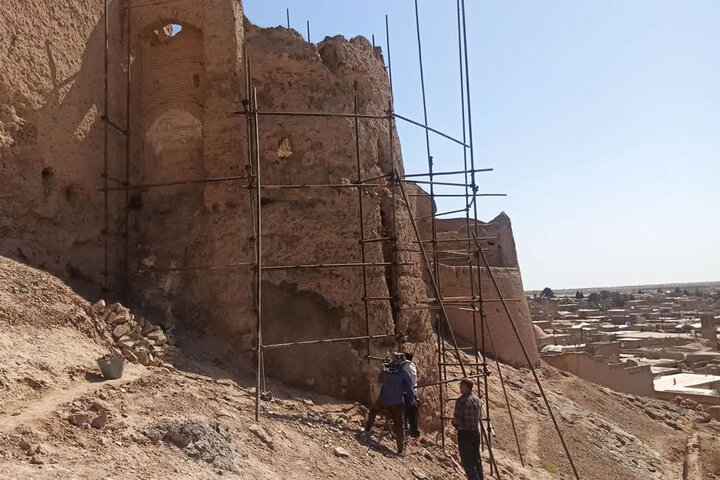Ruins of defensive fortress in central Iran undergo restoration

TEHRAN – Work has commenced to restore and strengthen Mohammadieh Fortress, which once served as a defensive refuge in the heart of Iran during ancient times.
Located atop a hill overlooking the Mohammadieh neighborhood of the Nain city of Yazd province, the fortress has historical significance dating back to the pre-Islamic and early Islamic eras.
Over the years, natural elements have caused considerable damage to the structure, especially after it was fully vacated in modern times, CHTN quoted Mahmoud Madanian, Nain’s tourism chief, as saying on Saturday.
Madanian noted that the first step in preserving the fortress was the registration of the site as a national heritage monument in 2019.
Following extensive efforts, ownership of the site was officially transferred to the Ministry of Cultural Heritage, Tourism, and Handicrafts in 2023, allowing for the launch of restoration efforts.
The current phase of the project focuses on reinforcing the walls of the western side and the towers with traditional mudbrick methods. Other efforts include restructuring the water drainage system and applying protective coatings to the walls.
Covering an area of about 1,400 square meters, the fortress is uniquely positioned near many of the region's historic and natural attractions, making it a prime candidate for future tourism investment and development as a cultural site.
According to Madanian, the Mohammadieh Fortress, built during the Sassanid era, served as a strong and defensive fortification against attacks by bandits and invaders.
Defensive fortresses in the past were seen as solid barriers against attacks from invaders and bandits, which is why such fortresses were often constructed on high ground, he explained.
He added that in the city of Nain and its surrounding villages, there is usually a defensive fortress or tower that was used in the past to protect against bandit attacks. The Mohammadieh Fortress served this critical role, providing shelter to the townspeople during such raids. Each family had a designated room within the fortress, stocked with enough provisions in advance.
The official explained that outside the city of Nain, a few kilometers away, watchtowers were strategically placed. During enemy attacks, the guards in these towers would signal the townspeople with smoke, giving them time to take refuge in the Mohammadieh Fortress. These fortresses often had a secret passage connected to an underground water channel (qanat), ensuring sufficient water supply during enemy sieges.
He also mentioned that the height of the fortress walls varies at different points, ranging from five to eight meters.
AM
Leave a Comment